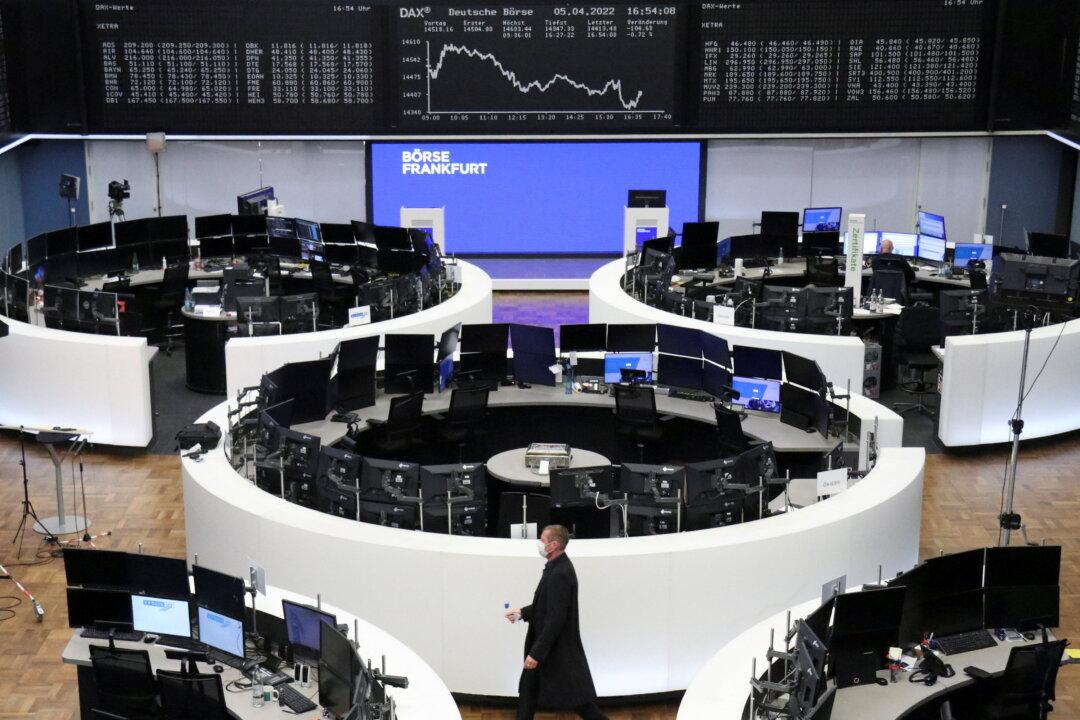LONDON—European shares opened weaker on Tuesday and Wall Street was tipped for a fall, as surging oil prices fanned fears of further acceleration in global inflation, forcing the U.S. Federal Reserve and other central banks to keep raising interest rates.
Markets ignored signs that China’s economic pain may be abating amid easing COVID-19 curbs and focused instead on the inflation outlook, as Brent crude futures dashed above $123 a barrel, a two-month high, and a Fed governor backed further interest rate hikes to tame prices.





